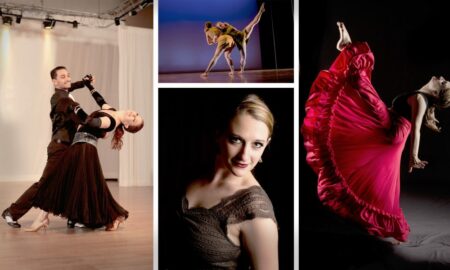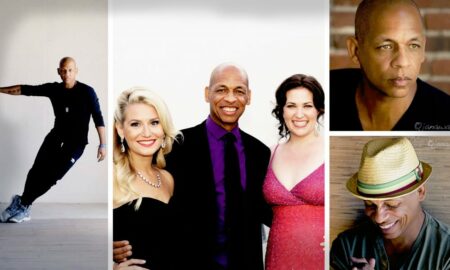

Today we’d like to introduce you to Lee Simpson Preslandbyrne.
So, before we jump into specific questions about the business, why don’t you give us some details about you and your story.
I grew up in a very traditional and large family of an indigenous tribal people, called the Hmong. My parents were war refugees from a village in the mountains of Laos and during the Vietnam war, our family had to swim across rivers and jungles to escape genocide and persecution, where they eventually landed in the U.S.
While I was growing up, my parents would always reminisce about their life before the war: how the grass felt underneath their bare feet, the beautiful sound the wind would whisper against their ears as they chant their songs of life and sorrow, the musical instruments they would make out of rice stems and the faithful animals that would follow them to the gardens.
My father absolutely loved telling us stories from the village and they didn’t have a written language for a long time, so most of our stories were passed down orally or through needle work. These needle work were sewn into cloths with images of folklore, the Hmong agricultural life or war.
These stories that my father would tell are called “dab neeg,” which translates to “ghost stories,” but eventually the term came to be used to describe “folklore” or “stories from the past.” The most fondest memory I had was whenever he was ready to tell a story, my siblings and I would race out of excitement to surround my father in a circle as he grabs his small bamboo woven chair.
He’d tell stories of death, monsters and spirits from the forests. My mother would sit on the sideline, filling anything that my father might’ve missed. The “dag neeg” always starts with a chant, usually an introduction to a story similar to “once upon a time.”
One of my favorite stories he told was a very popular folklore across the Hmong tribes. It told of a heartbroken woman who was betrayed by her lover and tied onto a tree, left to die. As she died, she created the craters on the moon; and when the full moon arose, she would come down to haunt men.
Growing up with these stories, inspired me to incorporate my photography in telling stories. Without realizing it, I’ve also passed these stories down to my daughter and she’d always prefer my imaginary stories to the books we’ve purchased; and so, “Lee Simoua” was created. “Si” from my daughter’s name and “Moua” from my maiden name.
Overall, has it been relatively smooth? If not, what were some of the struggles along the way?
Many bumps and crashes! Like all businesses and artwork, there will always be criticism or negative feedback, but I always let them sink in to help me improve. As Ludwig van Beethoven would say: “don’t only practice your art, but force your way into its secrets, for it and knowledge can raise men to the Divine.”
As a visual storyteller, I wanted to impact the community I came from, the Hmong and American community with imagination. Sometimes, people wouldn’t “get” my photos and would only view it aesthetically, but I’ve come to terms with also creating written stories to support my visuals.
Alright – so let’s talk business. Tell us about Lee Simoua – what should we know?
I specialize in storytelling portraits and fine art. Photos became more of headshots and more posed, and it seemed like the stories faded away, only recording our time from one point to the next. Photos seem less meaningful because they have stopped telling stories.
I wanted to create photos that are different from what traditional portraiture cannot provide: life.
I want to create surreal photographs that provide your dreams a voice, a way to sing, a different way to tell a story.
I am most proud of the ability to interchange whatever mood my client entails, whether it be The Shining or the Stepford Wives. You can be a princess, a ninja or a knight saving a damsel in distress!
What sets me apart from others is that I set a one-on-one basis with my clients to create and understand their story prior to shooting a session. I love that I get to direct through still photographs.
Any shoutouts? Who else deserves credit in this story – who has played a meaningful role?
My family! My basketweaving, blacksmith, jewelry maker, writer father who always told his creepy stories and my mother who added light through needlework who is also an animal whisperer (she just knows how to calm everyone and everything down). My four brothers and six sisters were also very artistic, so they also taught me the arts in their arena like arts and crafts, illustration, music creation and filming.
They played a major role in incorporating art in everything they’ve created, so it also helped me organize my ideas and stories in an artistic fashion. They would also help me critique some of the artwork that I would get stuck on, like pointing out the color range or lighting of my characters.
Contact Info:
- Website: https://500px.com/leesimoua
- Email: lee.simp11@gmail.com
- Instagram: https://www.instagram.com/lee_simoua
- Facebook: https://www.facebook.com/LeeSimoua







Getting in touch: VoyageATL is built on recommendations from the community; it’s how we uncover hidden gems, so if you know someone who deserves recognition please let us know here.




















Finlay
April 21, 2018 at 8:15 am
Wonderful article!!! So proud of my talented and beautiful love!!